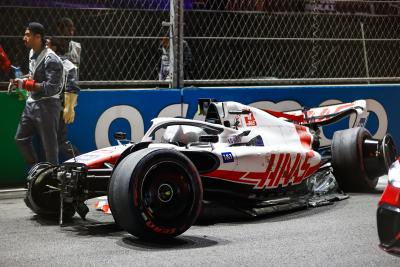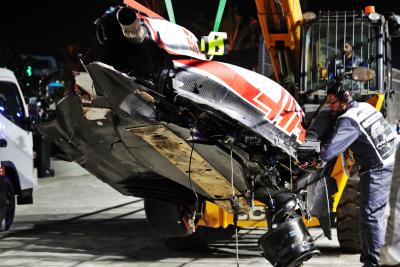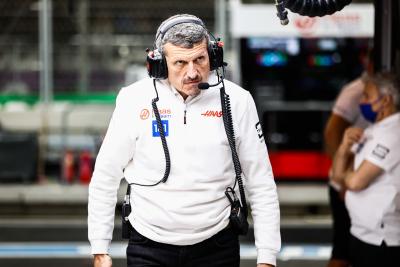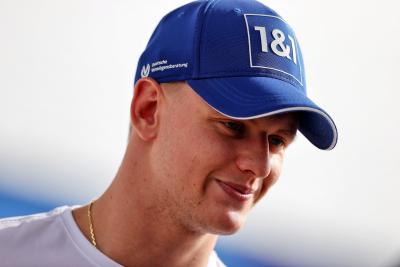Schumacher’s 33G Saudi F1 smash could cost Haas $1 million
Schumacher, the son of legendary seven-time F1 world champion Michael, was airlifted to hospital for precautionary checks after suffering a massive 33G shunt when he lost control of his car and slammed into the barriers at the exit of the high-speed Turn 10 in Q2.
The German was released without sustaining any injuries but did not take part in Sunday’s race in Jeddah.
- Schumacher out of hospital, ruled out of F1 Saudi GP
- Schumacher exclusive: At home in F1, Vettel friendship and Ferrari dreams
- Is Sainz at risk of becoming Ferrari's number two driver?
Haas has revealed that early investigations conducted in Jeddah indicate that the chassis and engine were the only major parts not written off in the high-speed accident, which almost ripped Schumacher's VF-22 car in two.
"The chassis itself doesn't seem to be broken,” said Haas team principal Guenther Steiner.
“The side impact structure, yes, but you can change them. Obviously we need to do a proper check on the chassis but it looks like it is not too bad to be honest.
“The engine also, I was told from Ferrari, seems to be okay. The battery pack as well. But then all the rest is broken!”
Asked how much the repair bill would likely be, Steiner replied: "I think the cost is still pretty high because all the suspension is gone, except the front left. I think there's still something on there.
"The rest is just like powder, carbon powder. I don't know money-wise as yet but these cars, between gearbox, the whole bodywork's gone, the radiator… Between $500,000 to $1 million I would say.”
While teams are allowed to exclude some costs for crash damage from F1’s new budget cap, Steiner admitted Haas cannot afford to have many big crashes this season.
“There's a nominal amount but in a racing team, you never can stick to your budget like in a normal commercial business, because you have this risk,” he said.
“You have got obviously a contingency there. But if you have two or three like this - pretty quick your contingency is not there anymore. It's a loss.
“So you just need to manage. Obviously, I hope we don't have a lot more of them.”
Why did Schumacher not race in Jeddah?
Despite being fit to race, Haas opted not to rebuild Schumacher’s car and decided to withdraw it from Sunday’s grand prix.
This was not due to a lack of spare parts, but to avoid the risk of compromising the upcoming races.
The American outfit is hoping to re-use the chassis for the Australian Grand Prix, subject to further tests.
Speaking in an appearance at the circuit on Sunday, Schumacher said he would have been ready to race had Haas fixed his car.
“I feel alright, not too sore either,” he said. “It just shows the safety of these cars these days to be able to walk away from this.
“I think 20 years back from here people wouldn’t be able to do that so thank you very much to everybody involved in the safety.”
Schumacher added: “I feel fit for it, but obviously car preservation and parts are important if we want to be racing in Melbourne.
“We want to be able to race in Melbourne, and if let’s say something else happened in today’s race that might not be the case. I definitely want to get those points and I’ll get them in Melbourne.”
Haas currently sits fifth in the 2022 constructors’ championship thanks to the 12 points scored by Kevin Magnussen across the opening two races in Bahrain and Saudi Arabia.














